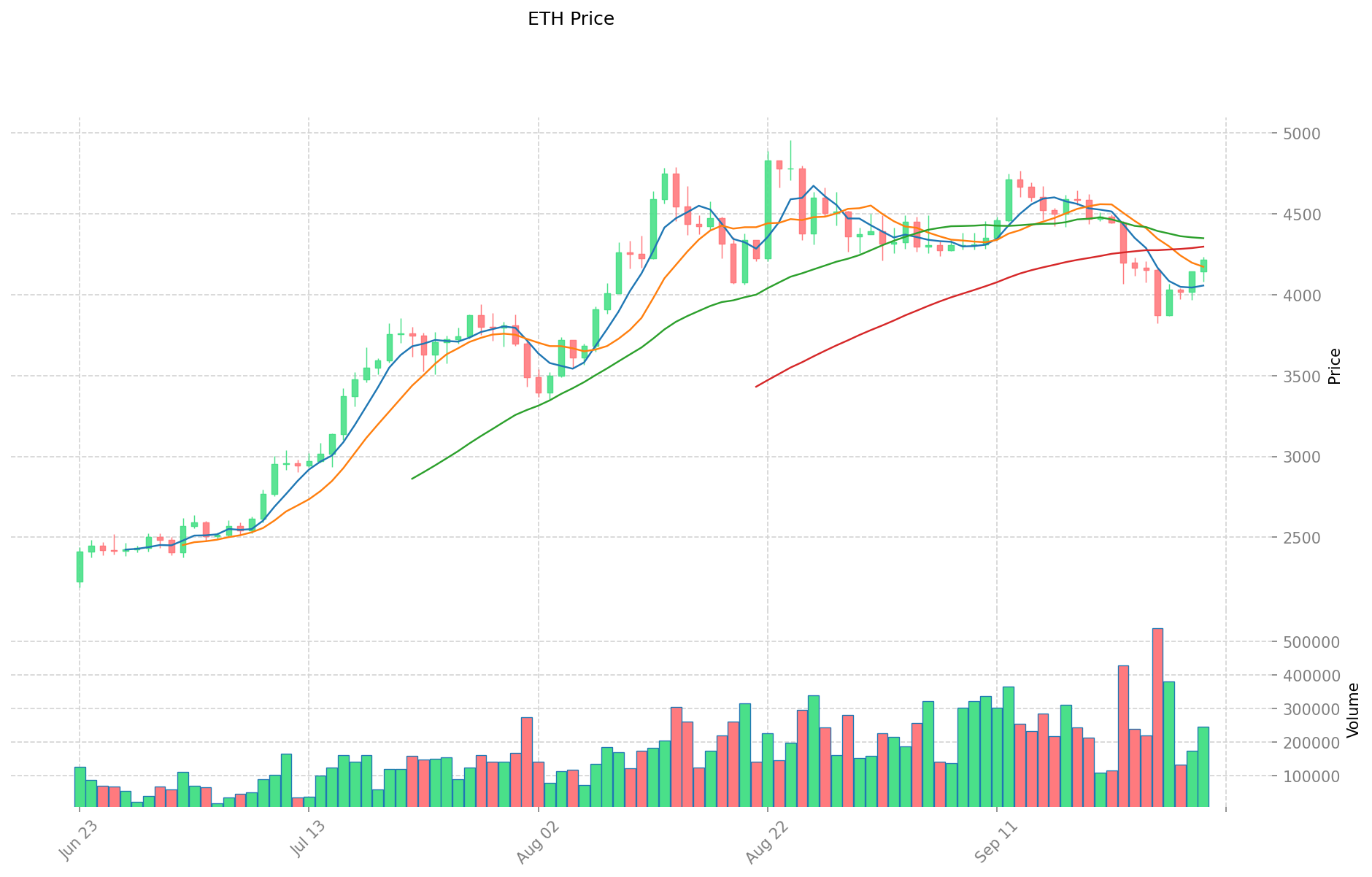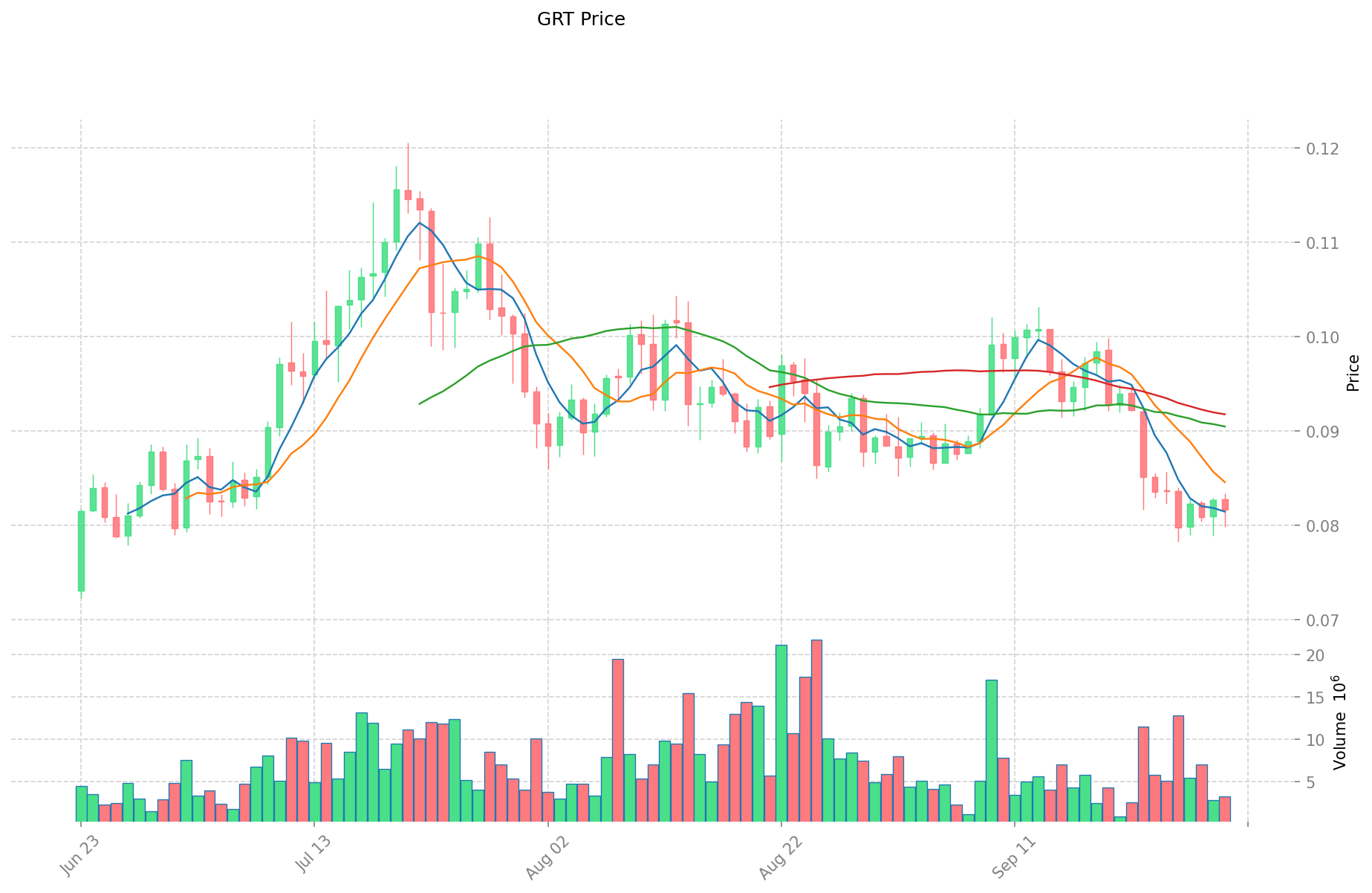ETH vs GRT: A Comparative Analysis of Ethereum and The Graph's Investment Potential in 2024
Introduction: ETH vs GRT Investment Comparison
In the cryptocurrency market, Ethereum vs The Graph comparison has always been an unavoidable topic for investors. The two not only have significant differences in market cap ranking, application scenarios, and price performance, but also represent different cryptocurrency asset positioning.
Ethereum (ETH): Since its launch in 2015, it has gained market recognition for its support of smart contracts and decentralized applications (DApps).
The Graph (GRT): Introduced in 2020, it has been hailed as a decentralized protocol for indexing and querying blockchain data, primarily applied to Ethereum.
This article will comprehensively analyze the investment value comparison between ETH and GRT, focusing on historical price trends, supply mechanisms, institutional adoption, technological ecosystems, and future predictions, and attempt to answer the question investors care about most:
"Which is the better buy right now?" Here is the report section based on the provided template and information:
I. Price History Comparison and Current Market Status
Ethereum (ETH) and The Graph (GRT) Historical Price Trends
- 2021: ETH reached an all-time high of $4,946.05 due to increased institutional adoption and DeFi growth.
- 2022: GRT experienced significant volatility, dropping to a low of $0.052051 during the broader crypto market downturn.
- Comparative analysis: During the 2022 bear market, ETH declined from its peak of $4,946.05 to around $880, while GRT saw an even steeper drop from its all-time high of $2.84 to below $0.06.
Current Market Situation (2025-09-30)
- ETH current price: $4,148.94
- GRT current price: $0.07977
- 24-hour trading volume: ETH $1,101,606,348 vs GRT $342,448
- Market Sentiment Index (Fear & Greed Index): 50 (Neutral)
Click to view real-time prices:
- View ETH current price Market Price
- View GRT current price Market Price


II. Core Factors Influencing ETH vs GRT Investment Value
Supply Mechanism Comparison (Tokenomics)
- ETH: Can be used as a store of value, with network fees (gas) required for transactions and operations on the Ethereum blockchain.
- GRT: An ERC-20 token running on Ethereum, primarily used for incentivizing data indexing and governance within The Graph Protocol.
- 📌 Historical Pattern: Market trends, regulatory developments, and macroeconomic conditions influence both assets' price cycles.
Institutional Adoption and Market Applications
- Market Position: GRT serves as the native token for The Graph Protocol, holding a core position in blockchain data indexing.
- Enterprise Use: ETH functions as a foundation for decentralized applications, while GRT specializes in providing efficient data querying solutions for dApps.
- Regulatory Attitudes: Cryptocurrency regulations and market sentiment affect both tokens' adoption and valuation.
Technical Development and Ecosystem Building
- ETH Ecosystem: Serves as infrastructure for decentralized finance applications and value storage.
- GRT Development: Focuses on subgraphs and cross-chain integration to revolutionize blockchain data services.
- Ecosystem Comparison: GRT has experienced significant price volatility, with reports of 104% growth followed by 13% decline, demonstrating the highly speculative nature of the token.
Macroeconomic Factors and Market Cycles
- Market Performance: Both tokens are influenced by broader cryptocurrency market trends.
- Investment Considerations: When evaluating investment potential, factors like overall market trends, project fundamentals, current market capitalization, and price entry points must be considered.
- Risk Assessment: Investors should maintain rationality and make decisions based on personal risk tolerance and investment goals rather than short-term price movements.
III. 2025-2030 Price Prediction: ETH vs GRT
Short-term Prediction (2025)
- ETH: Conservative $3,247.32 - $4,163.23 | Optimistic $4,163.23 - $4,621.19
- GRT: Conservative $0.0662 - $0.0797 | Optimistic $0.0797 - $0.1020
Mid-term Prediction (2027)
- ETH may enter a bullish market, with prices expected in the range of $2,826.39 - $5,498.60
- GRT may enter a growth phase, with prices expected in the range of $0.0756 - $0.1144
- Key drivers: Institutional capital inflow, ETF developments, ecosystem growth
Long-term Prediction (2030)
- ETH: Base scenario $5,472.77 - $6,840.97 | Optimistic scenario $6,840.97 - $9,714.18
- GRT: Base scenario $0.1155 - $0.1203 | Optimistic scenario $0.1203 - $0.1287
Disclaimer: This analysis is based on historical data and market projections. Cryptocurrency markets are highly volatile and unpredictable. This information should not be considered as financial advice. Always conduct your own research before making investment decisions.
ETH:
| 年份 | 预测最高价 | 预测平均价格 | 预测最低价 | 涨跌幅 |
|---|---|---|---|---|
| 2025 | 4621.1853 | 4163.23 | 3247.3194 | 0 |
| 2026 | 5885.558251 | 4392.20765 | 2503.5583605 | 5 |
| 2027 | 5498.604757035 | 5138.8829505 | 2826.385622775 | 23 |
| 2028 | 6276.11774744565 | 5318.7438537675 | 2978.4965581098 | 28 |
| 2029 | 7884.505888824942 | 5797.430800606575 | 3478.458480363945 | 39 |
| 2030 | 9714.17504949637707 | 6840.9683447157585 | 5472.7746757726068 | 64 |
GRT:
| 年份 | 预测最高价 | 预测平均价格 | 预测最低价 | 涨跌幅 |
|---|---|---|---|---|
| 2025 | 0.1020288 | 0.07971 | 0.0661593 | 0 |
| 2026 | 0.119038914 | 0.0908694 | 0.049069476 | 13 |
| 2027 | 0.11440003113 | 0.104954157 | 0.07556699304 | 31 |
| 2028 | 0.12393511629345 | 0.109677094065 | 0.06690302737965 | 37 |
| 2029 | 0.123814471489978 | 0.116806105179225 | 0.084100395729042 | 46 |
| 2030 | 0.128732008518023 | 0.120310288334601 | 0.115497876801217 | 50 |
IV. Investment Strategy Comparison: ETH vs GRT
Long-term vs Short-term Investment Strategies
- ETH: Suitable for investors focused on ecosystem potential and DeFi growth
- GRT: Suitable for investors interested in blockchain data infrastructure and indexing services
Risk Management and Asset Allocation
- Conservative investors: ETH: 70% vs GRT: 30%
- Aggressive investors: ETH: 60% vs GRT: 40%
- Hedging tools: Stablecoin allocation, options, cross-currency portfolios
V. Potential Risk Comparison
Market Risk
- ETH: High volatility, susceptible to overall crypto market trends
- GRT: Extreme price fluctuations, highly speculative nature
Technical Risk
- ETH: Scalability, network stability
- GRT: Centralization concerns, potential security vulnerabilities
Regulatory Risk
- Global regulatory policies may impact both assets differently, with ETH potentially facing more scrutiny due to its larger market presence
VI. Conclusion: Which Is the Better Buy?
📌 Investment Value Summary:
- ETH advantages: Established ecosystem, smart contract platform, institutional adoption
- GRT advantages: Niche market in blockchain data indexing, potential for growth in data services
✅ Investment Advice:
- New investors: Consider a higher allocation to ETH due to its established market position
- Experienced investors: Balanced portfolio with both ETH and GRT, adjusting based on risk tolerance
- Institutional investors: Focus on ETH for its liquidity and market depth, with strategic allocation to GRT for exposure to blockchain data services
⚠️ Risk Warning: The cryptocurrency market is highly volatile. This article does not constitute investment advice. None
VII. FAQ
Q1: What are the main differences between ETH and GRT? Answer: ETH is the native cryptocurrency of the Ethereum blockchain, used for transactions and smart contracts, while GRT is an ERC-20 token used specifically for The Graph protocol, which indexes blockchain data. ETH has a larger market cap and broader use cases, while GRT is more specialized in data services.
Q2: Which has shown better price performance historically, ETH or GRT? Answer: ETH has generally shown more stable price performance and has reached higher all-time highs. GRT has experienced more extreme volatility, with significant growth followed by steep declines. ETH's price history is longer and more established.
Q3: How do the supply mechanisms of ETH and GRT differ? Answer: ETH has a flexible supply with a deflationary mechanism through token burning, while GRT has a fixed supply of 10 billion tokens. ETH is used for network fees and as a store of value, whereas GRT is primarily used for incentivizing data indexing and protocol governance.
Q4: What are the key factors influencing the future price of ETH and GRT? Answer: Key factors include institutional adoption, regulatory developments, technological advancements, overall crypto market trends, and macroeconomic conditions. For ETH, the growth of DeFi and Ethereum's ecosystem are crucial, while for GRT, the expansion of blockchain data services and adoption of The Graph protocol are important.
Q5: How should investors approach allocating between ETH and GRT? Answer: Conservative investors might consider a 70% ETH to 30% GRT ratio, while more aggressive investors could opt for a 60% ETH to 40% GRT split. The allocation should be based on individual risk tolerance, investment goals, and market outlook.
Q6: What are the main risks associated with investing in ETH and GRT? Answer: Both face market risks such as high volatility and regulatory uncertainties. ETH has technical risks related to scalability and network stability, while GRT faces risks associated with centralization concerns and potential security vulnerabilities. Regulatory risks may impact ETH more due to its larger market presence.
Q7: Which is considered a better long-term investment, ETH or GRT? Answer: While both have potential, ETH is generally considered a safer long-term investment due to its established ecosystem, broader adoption, and role as a foundation for many blockchain applications. GRT may offer higher growth potential but comes with increased risk due to its specialized focus and smaller market cap.
Share
Content